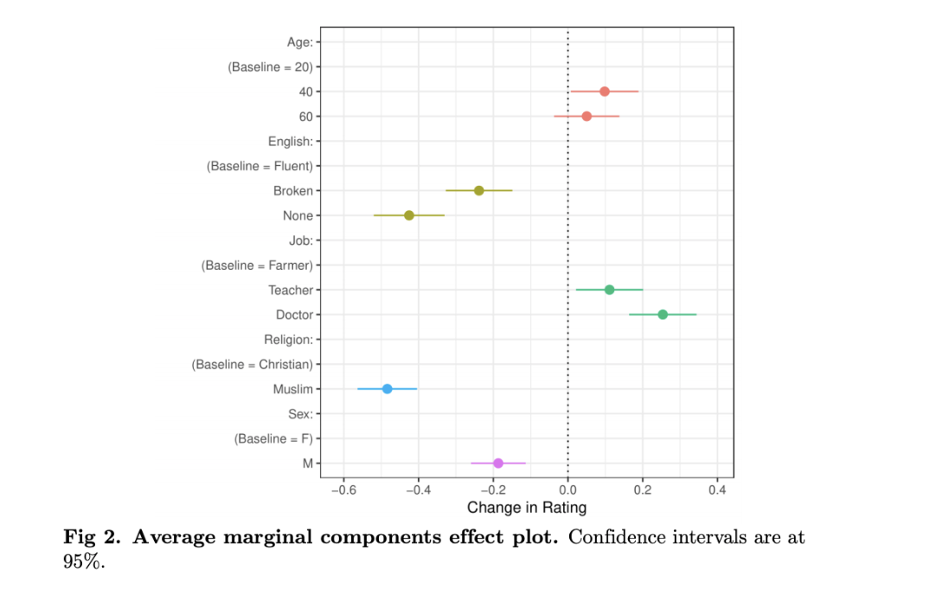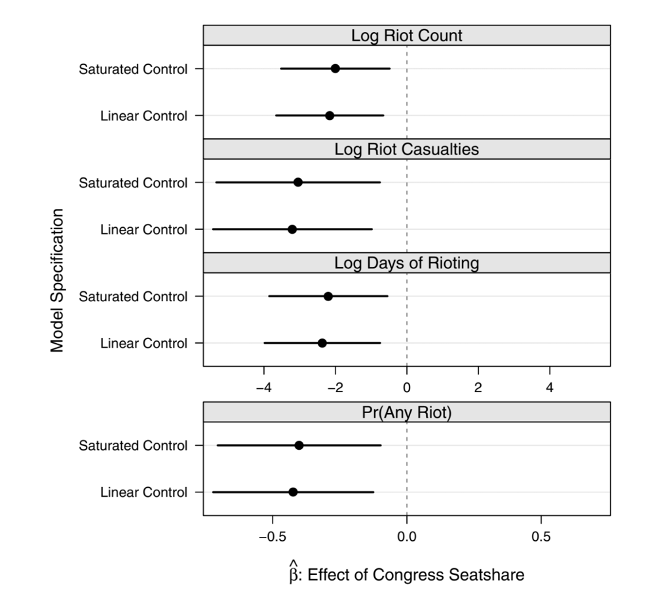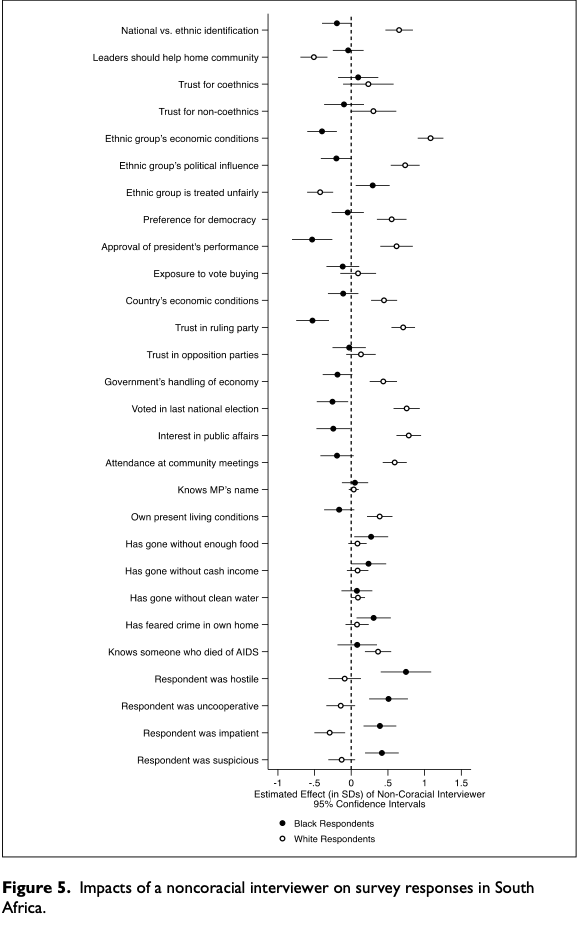Prof. LaGina Gause teaches POLI 100I (Participation and Inequality). This figure, from her new paper, “Revealing Issue Salience via Costly Protest,“ shows the differences in the predicted probability of legislative support of constituents’ preferences on Civil Rights, Civil Liberties, and Minority issues in districts with a protest compared to districts without a protest relevant to a roll call vote. Across the board, legislators are more likely to support constituency preferences revealed via protest than preferences not revealed during protest. Legislators are most likely to support preferences revealed during protest by groups with fewer resources compared to higher resource groups and non-protesting districts. The difference in favor of low-resource groups is statistically significant for low-income and racial and ethnic minority protesters compared to higher income and white protesters, respectively. But the difference is not statistically significant between grassroots protests and those organized by formal interest groups.

Prof. Claire Adida teaches Politics of Multiculturalism, where students discuss how liberal democracies manage diversity, and engage in theoretical debates and empirical explorations of topics like affirmative action, immigrant integration, group rights and gender equity, and reparations.

This figure is from “Americans Preferred Syrian Refugees Who are Female, English-Speaking, and Christian on the Eve of Donald Trump’s Election.” It shows that, on the eve of Donald Trump's election in November 2016, Americans were more likely to choose for admission into the US, Syrian refugees who are native English-speakers, highly-skilled, female, and Muslim. The Muslim penalty is the largest, and it prevails across all subgroups of respondents (by party, race, religion).
Prof. Gareth Nellis teaches a class on Democracy, Development, and Conflict in South Asia that addresses the relevance of religion, sect, and class for politics in the subcontinent. Does the partisanship of local legislators matter for ethnic violence? This figure shows that when candidates affiliated with India's main secular-nationalist party, the Indian National Congress, win office by very narrow margins, there is a marked decrease in subsequent Hindu-Muslim riots. This appears to be because incumbents have significant sway over the local police, and because Congress politicians disproportionately depend on the votes of Muslims, who are largely the victims of communal violence.

Prof. Karen Ferree’s research in “Who’s Asking? Interviewer Coethnicity Effects in African Survey Data,” (co-authored with UCSD’s Claire Adida), shows that Black and White South Africans provide differing survey responses depending on the race/ethnicity of the interviewer, a finding that holds in other African countries as well.

Prof. Thad Kousser teaches Poli 103A: California Politics, which addresses how our multicultural state comes together or splits apart when addressing political and policy debates. His recent research looking at how Californians want to cast ballots in the 2020 election shows that racial and ethnic groups have different levels of comfort with casting a ballot at a polling place.
